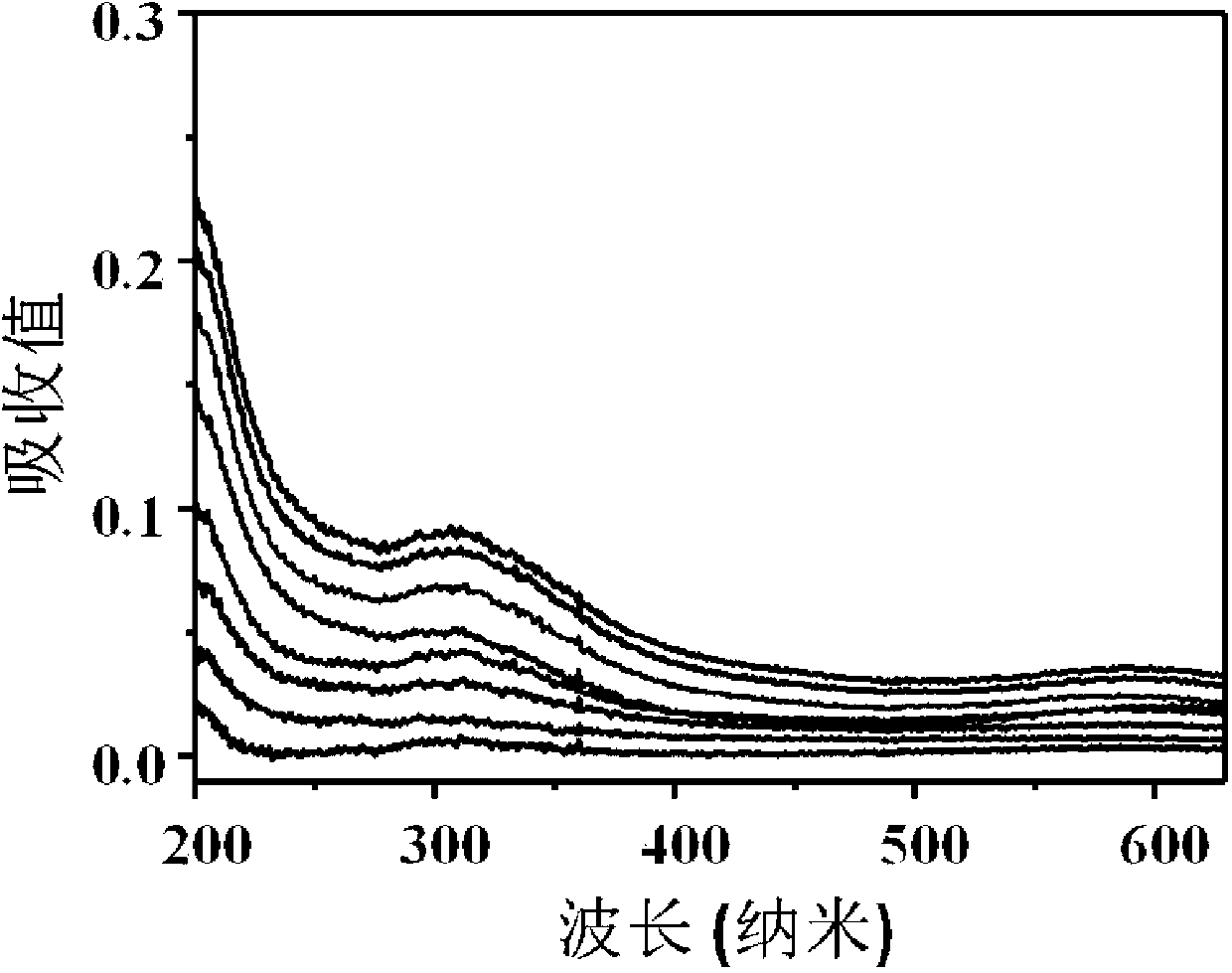Grafted copolymer and preparation method thereof and layer-by-layer decorative materials
A graft copolymer and modified material technology, applied in the field of graft copolymer, its preparation method and layer-by-layer modified materials, can solve the problems of no electrical activity, etc., achieve good water solubility, good composite layers, good electrical Effect of Chemical Response Properties
- Summary
- Abstract
- Description
- Claims
- Application Information
AI Technical Summary
Problems solved by technology
Method used
Image
Examples
preparation example Construction
[0057] The present invention also provides a kind of preparation method of graft copolymer, comprising:
[0058]A) Mix the initiator with the acid anhydride in the amino acid ring, carry out ring-opening polymerization, and then deprotect to obtain polyglutamic acid copolymer or polylysine copolymer, the initiator is selected from n-hexylamine or triethylamine , the acid anhydride in the amino acid ring is selected from benzyl glutamate-N-carboxylic acid anhydride or benzyloxycarbonyl-lysine-N-carboxylic acid anhydride;
[0059] B) Mix the polyglutamic acid copolymer obtained in step A) with the coupling reagent and the compound having the structure of formula (III) to undergo a condensation reaction to obtain a polyglutamic acid graft copolymer; or mix the polyglutamic acid graft copolymer obtained in step A) The polylysine copolymer is mixed with the coupling reagent and the compound having the structure of formula (IV), and undergoes condensation reaction to obtain the poly...
Embodiment 1
[0131] Dissolve 3.68g (0.02mol) of N-phenyl-1,4-p-phenylenediamine in a mixture of 100mL acetone, 100mL water and 25mL concentrated hydrochloric acid to obtain N-phenyl-1,4-p-phenylenediamine mixed solution, and frozen to 0°C; then weighed 4.56g (0.02mol) of ammonium persulfate (APS) and dissolved it in 50mL of 1mol / L HCl aqueous solution to obtain an APS solution, and slowly dropped the APS solution into N-phenyl-1 , in the 4-p-phenylenediamine mixture (dropped in about half an hour), reacted for 3 hours after dropping, then filtered to obtain a solid, and then washed the solid with 0.6mol / L HCl aqueous solution and acetone, and filtered with 0.5mol / L The solid was back-doped with L ammonia water, and finally the solid was washed three times with water to neutrality, freeze-dried and then vacuum-dried to obtain aniline tetramers whose terminal groups were amino groups. The yield was 80%.
Embodiment 2
[0133] Dissolve 3.5g of N-(4-anilino)-1,4-p-phenylenediamine and 2.6g of N,N-diphenyl-1,4-p-phenylenediamine in 100mL N,N-dimethylformaldehyde A mixture of N-(4-anilino)-1,4-p-phenylenediamine and N,N-diphenyl-1,4-p-phenylenediamine was obtained from a mixture of amide, 15mL water and 15mL concentrated hydrochloric acid, and freeze to 0°C; then weigh 2.28 g (0.01 mol) of ammonium persulfate APS and dissolve it in 50 mL of 1 mol / L HCl aqueous solution to obtain an APS solution, slowly drop the APS solution into N-(4-anilino)-1 , in the mixture of 4-p-phenylenediamine and N,N-diphenyl-1,4-p-phenylenediamine (dropped in about half an hour), react for 1 hour after dropping, and then pour the product into 700mL of water for Precipitate, filter to obtain a solid, wash the solid three times with 0.1mol / L HCl aqueous solution and water successively, then back-dope the solid with 0.1mol / L ammonia water, and finally wash the solid three times with water once until neutral, freeze-dry an...
PUM
 Login to View More
Login to View More Abstract
Description
Claims
Application Information
 Login to View More
Login to View More - R&D
- Intellectual Property
- Life Sciences
- Materials
- Tech Scout
- Unparalleled Data Quality
- Higher Quality Content
- 60% Fewer Hallucinations
Browse by: Latest US Patents, China's latest patents, Technical Efficacy Thesaurus, Application Domain, Technology Topic, Popular Technical Reports.
© 2025 PatSnap. All rights reserved.Legal|Privacy policy|Modern Slavery Act Transparency Statement|Sitemap|About US| Contact US: help@patsnap.com



